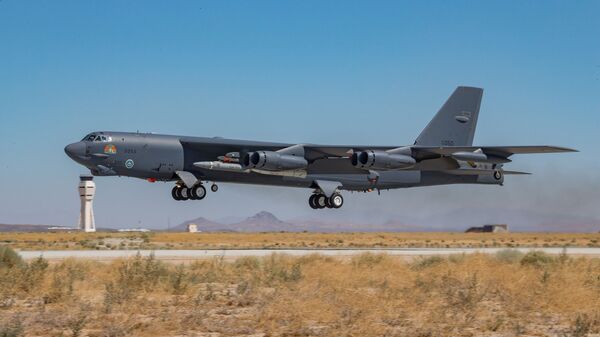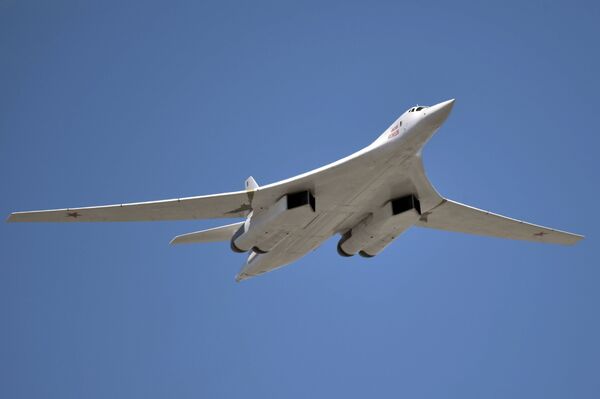On Monday, STRATCOM posted “a little #MondayMotivation to show what teamwork can accomplish” on its Twitter account, listing missions flown by its B-1B Lancer, B-52 Stratofortoress and B-2 Spirit strategic bombers that lasted dozens of hours each.
A little #MondayMotivation to show what teamwork can accomplish.
— US Strategic Command (@US_Stratcom) September 21, 2020
Non-stop flights:
✅B-1 Lancer: 30 Hours (2014)
✅B-2 Spirit: 44 Hours (2001)
✅B-52 Stratofortress: 45 Hours (1957)
Together, the combatant commands set the bar for excellence.#Deterrence #TogetherWeDeliver pic.twitter.com/hwh1wAX50l
However, this info-drop wasn’t out of the blue: last week, Lt. Gen. Sergey Kobylash, commander of the Russian Aerospace Forces’ Long-Range Aviation division, boasted that two of its Tu-160 White Swan bombers (NATO reporting name “Blackjack”) had flown 25-hour nonstop flights.
"Today, a new record for range and flight duration was set by two long-range flight crews on Tu-160 supersonic strategic missile carriers. The Russian Aerospace Forces pilots were in the air for more than 25 hours and covered more than 20,000 kilometers [12,400 miles]," Kobylash said.
Flying from Engels in western Russia’s Saratov Oblast, the huge white bombers flew a circuitous route that covered the northerly Kara, Laptev, East Siberian, Chukchi and Barents Seas, as well as parts of the Arctic and Pacific Oceans, before returning to Engels. Kobylash didn’t say when the flights had happened.
US bombers have likely set such longer records because the US has long used its strategic bomber fleet to posture as having global reach. Earlier this year, the Pentagon began a “dynamic force employment” practice, sending its bombers on world-spanning hikes to suddenly appear near places of geostrategic significance. One mission saw a B-1B Lancer, a rough analogue to the White Swan, soar for 24 hours from South Dakota to take part in live-fire drills in Estonia, just a few miles from the Russian border.
In another incident, two Lancers flew 30 hours from South Dakota to drill with Japanese forces near the Democratic People’s Republic of Korea (DPRK), whose leader, Kim Jong Un, was widely rumored at the time to have disappeared. In a third, two B-2 Spirit stealth bombers and four B-52 Stratofortress strategic bombers were suddenly dispatched from the US to the European and Indo-Pacific theaters.
By comparison, Russian long-range flights are few and far between. Last year, two Tu-160s flew to South Africa, and the year prior, two flew to Venezuela; on both occasions, the planes landed at their destinations. But then, Russia has never waged a war far from its borders, whereas the United States has been in the business of bombing far-away countries for nearly three-quarters of a century, so perhaps that kind of specialization comes with the territory.
However, if Moscow wanted to boast, in 2010, two Tu-95 bombers (NATO reporting name “Bear”) flew 43-hour nonstop missions across the entire Arctic region, nearly equal to STRATCOM’s most extreme brags.


